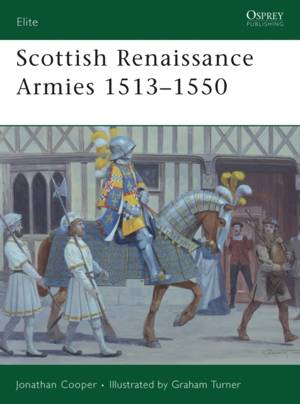
- Afhalen na 1 uur in een winkel met voorraad
- Gratis thuislevering in België vanaf € 30
- Ruim aanbod met 7 miljoen producten
- Afhalen na 1 uur in een winkel met voorraad
- Gratis thuislevering in België vanaf € 30
- Ruim aanbod met 7 miljoen producten
Omschrijving
This book details the armies of what is known as "the Rough Wooing" - the most active period of Scottish warfare, which saw conflicts against both the English Tudor monarchs and notable internal struggles between the Stuart kings and their unruly lords in the Marches and highlands. Militarily, this covers an important transition period, which saw the change from medieval to Renaissance armies, with the spread of firearms and cannon, the involvement of various foreign mercenaries and tactics ranging from lightning cavalry raids to pitched battles and sieges, as well as early instances of the classic Highland Clan charge. The author analyzes these changes in the context of the ongoing conflict as well as examining the colorful costumes, armor and heraldry worn during the period, a diverse mix of late medieval, Elizabethan and Highland clothing and armor.
The major battles are also discussed and described, such as Flodden Field (1513) and Linlithgow Bridge (1526), including engagements between the armies of rival lords, such as Douglas and Lennox, which could involve up to 10,000 men. Ultimately, this was a time of great success for the Scots. By the fall of Lauder in 1550 the English had lost every fortress north of the border. Scotland's independence was secure and 50 years later King James VI of Scotland became the first Stuart king of England.Specificaties
Betrokkenen
- Auteur(s):
- Illustrator(s):
- Uitgeverij:
Inhoud
- Aantal bladzijden:
- 64
- Taal:
- Engels
- Reeks:
- Reeksnummer:
- nr. 167
Eigenschappen
- Productcode (EAN):
- 9781846033254
- Verschijningsdatum:
- 18/11/2008
- Uitvoering:
- Paperback
- Formaat:
- Trade paperback (VS)
- Afmetingen:
- 182 mm x 245 mm
- Gewicht:
- 213 g

Alleen bij Standaard Boekhandel
Beoordelingen
We publiceren alleen reviews die voldoen aan de voorwaarden voor reviews. Bekijk onze voorwaarden voor reviews.











